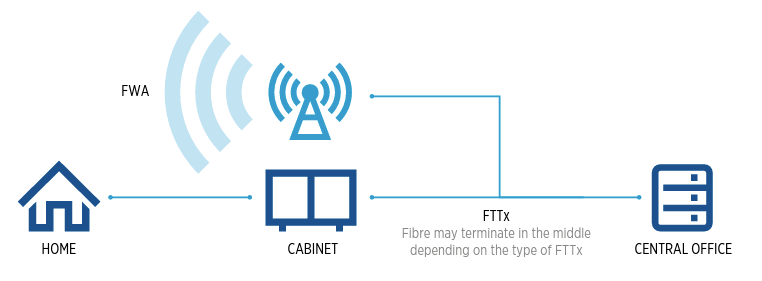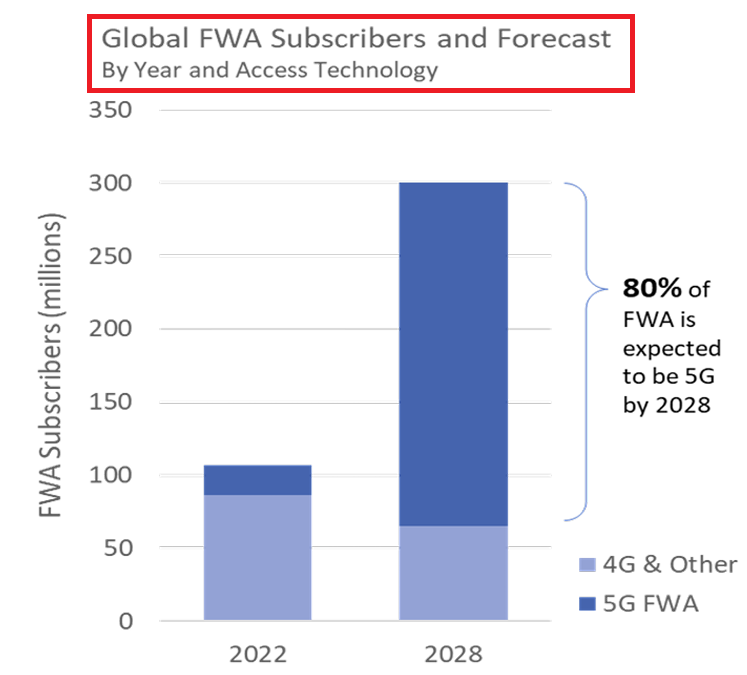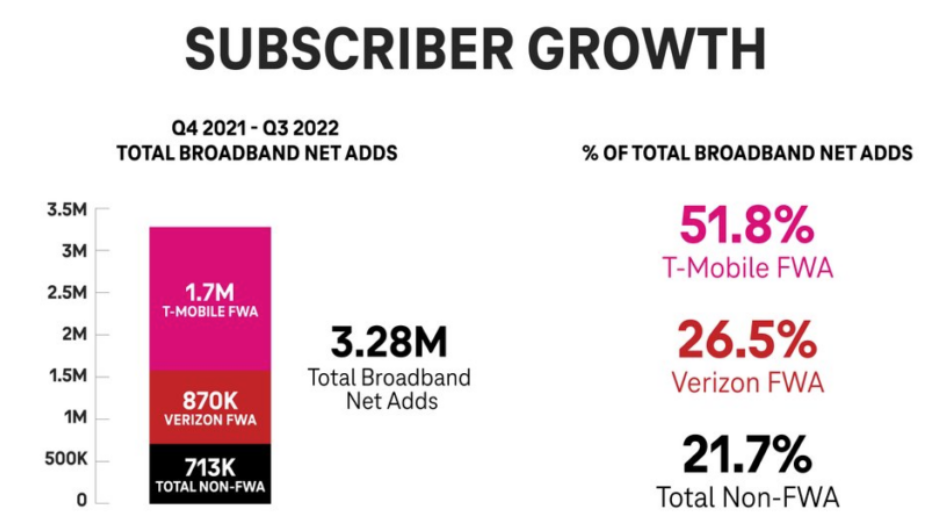Fixed Wireless Access (FWA), a wireless link that provides connectivity to objects that are stationary or nomadic, will receive a boost thanks to improved 5G capabilities. The first 5G use case we highlight is FWA. The demand for high-speed broadband connectivity continues to grow exponentially, driven by the increasing reliance on digital technologies and the proliferation of data-intensive applications. FWA has emerged as a promising solution to address the connectivity needs of both urban and rural areas, offering attractive opportunities for 5G-based residential and business services.

FWA Value Proposition
Many countries use the capacity of 5G to provide FWA services to homes and businesses. This allows for vastly accelerated roll-out of high-speed internet compared with digging fiber and comes at a fraction of the cost. Affordable FWA connectivity will thus become an important driver in sustainable development and industrial competitiveness. So we can summarize the 5G FWA Positioning below points:
- Broadband Competition, The idea of 5G FWA competing with fixed broadband is a polarising proposition. The attraction is that 5G NR provides an experience that enables operators to offer a high-performing, competitive broadband service for customers.
- Cost-efficient last mile, GSMA analysis shows how making sufficient spectrum available for FWA can significantly lower capex in rolling out new services by lowering the need for network densification.
- FWA becomes a 5G killer app – A win-win situation, Win for users faster and cheaper service, Win for operators, providing fixed broadband access on the same CPAEX network for 5G.
- Faster Broadband, FWA is a suitable solution for the enterprise that needs faster speeds in a short investment and time.
- Complementing Fiber, as it’s a good alternative for areas that lack fiber densification.
The advantages of 5G FWA solutions are substantial. In some cases, they can deliver speeds that are more than ten times faster than 4G FWA, but more importantly, they provide significant capacity enhancements resulting from various technological advancements.
FWA TCO
There’s a study for 10 years TCO for FWA Vs. FTTH, So really when new ducks/poles are needed:
- Rural, there’s a 65% cost saving.
- Suburban, up to 45% cost saving.
- Urban, up to 25% cost saving.
FWA Opportunities & Drivers
There are many opportunities and rivers for the FWA as below:
- DSL/VDSL replacement.
- Work/schooling from home.
- Connect the unconnected.
- Government Broadband plans.
- 5G Launch.
FWA Growth
Ericsson predicts an impressive 19% annual growth in FWA subscriptions from 2022 to 2028, expecting the global total to exceed 300 million by the end of that period. As global fixed wireless access subscribers continue to grow; it is expected that 80% of subscribers will use 5G access technology by 2028. (Ericsson Mobility Report, June 2023)
Also, if we see the main regions for FWA growth, it’ll be the USA (3.7 million subscribers), Europe (3 million subscribers) , Southeast Asia, the Middle East, South Africa, and India. Over 75% of service providers across more than 100 countries now offer FWA services, with about 33% delivering FWA over 5G. This marks a substantial increase from 20% the previous year.

If we take one example from the US T-Mobile report, In the third quarter of 2022, T-Mobile welcomed its two millionth internet customer, doubling its total number of customers in just six months.

